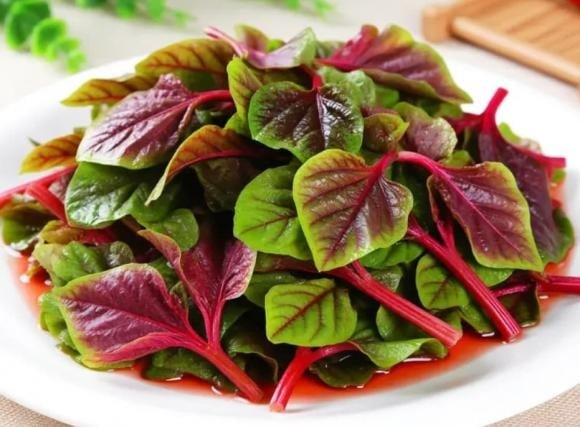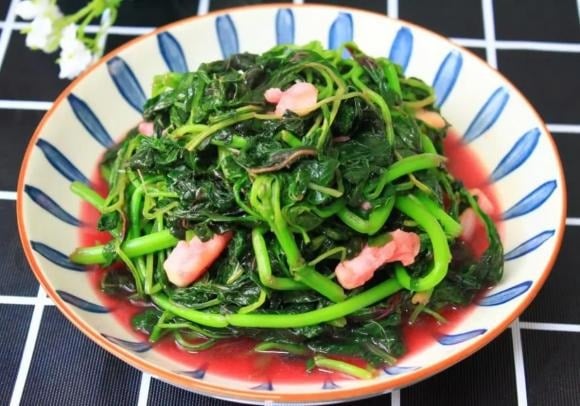Amaranth, a Nutritional Powerhouse: Packing 46 Times More Folic Acid than Cucumbers, This Green Superfood is Ideal for Middle-Aged and Elderly Individuals
Not many are aware that amaranth, or rau dền in Vietnamese, is a green vegetable that boasts superior nutritional value compared to many familiar vegetables, especially cucumbers. According to research, amaranth contains up to 46 times more folic acid than cucumbers, making it an ideal choice for a healthy diet.
Middle-aged and elderly individuals should include amaranth in their meals at least twice a week to help detoxify and cool their bodies, improve their mental well-being, enhance memory, and maintain a healthy nervous system.
Folic acid, also known as vitamin B9, is an essential nutrient that plays a crucial role in preventing anemia, supporting nervous system function, and promoting cell regeneration. For older adults, supplementing with folic acid becomes even more necessary to maintain overall health and well-being.
1. Amaranth Boosts Mental Well-being and Fights Fatigue
Have you been feeling tired lately, sleepy after lunch, or struggling to focus on afternoon tasks without a nap? These could be signs that your body is lacking essential nutrients, especially folic acid. One simple way to address this is by incorporating green vegetables into your diet, particularly amaranth.

Amaranth is a rich source of folic acid, providing up to 419.9 mcg of folic acid per 100g serving, which is 46 times more than cucumbers. This nutrient-dense vegetable helps improve memory, enhances mental alertness, and effectively combats fatigue.
2. The Benefits of Amaranth for Middle-Aged and Elderly Individuals
Incorporating amaranth into your weekly meals offers a plethora of health benefits, especially for middle-aged and elderly individuals. These include:
- Preventing stroke
- Reducing the risk of Alzheimer’s disease
- Providing calcium and iron for strong bones and preventing anemia
- Detoxifying and supporting eye health
- Lowering blood pressure and boosting immunity
Despite its commonplace presence, amaranth offers exceptional nutritional value, especially for the middle-aged and elderly. Consume amaranth at least twice a week to maintain your health, supplement folic acid, detoxify your body, and enhance your memory.

Amaranth is even dubbed the “longevity vegetable” due to its remarkable health benefits. For instance, my 90-year-old grandmother, who loves amaranth, remains in excellent health, enjoys her meals, and maintains a sharp mind.
3. Two Delicious and Nutritious Amaranth Recipes
Dish 1: Stir-fried Amaranth with Pork Belly
Ingredients: Amaranth, pork belly, scallions, garlic, dried chili, salt, pepper, sugar, cooking oil, and cooking wine.
Instructions:
- Wash the amaranth, lightly rub with salt, let it sit for 5 minutes, then squeeze out the excess water.
- Cut the pork belly into strips and fry until golden to reduce excess fat.
- Add cooking wine to remove the pork’s odor, then add scallions, garlic, and dried chili, stir-frying until fragrant.
- Toss in the amaranth and quickly stir-fry over high heat. Season with salt, pepper, and sugar to taste.
This stir-fried amaranth with pork belly dish is not only delicious and colorful but also incredibly easy to make, making it a perfect side dish to enjoy with rice.
Dish 2: Amaranth and Century Egg Soup
Ingredients: Amaranth, 2 century eggs, ginger, garlic, scallions, salt, pepper, cooking oil, and seasoning powder.
- Wash and cut the amaranth into sections.
- Peel and chop the century eggs.
- Blanch the amaranth in salted water with a drizzle of cooking oil for 1 minute, then transfer it to a soup pot.
- Sauté the century eggs with cooking oil, adding in ginger and garlic for extra aroma.
- Pour hot water into the pot, season with salt, seasoning powder, and pepper, bring it to a boil, and then pour it into the amaranth soup pot.
This amaranth and century egg soup is not only nutritious but also easy to prepare. The broth is sweet and refreshing, making it an excellent choice for a nourishing meal.



































